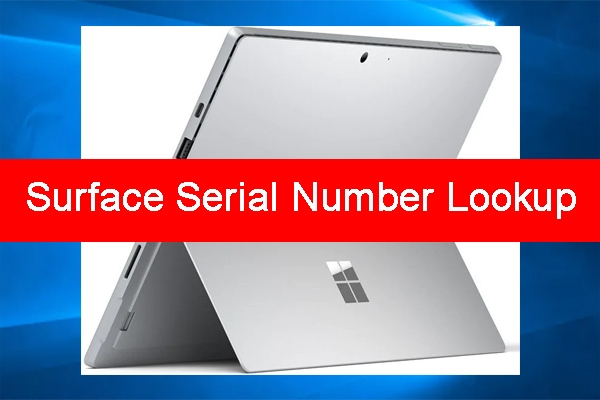Surface Device Consolidation: Microsoft's Latest Strategy

Reasons Behind Microsoft's Surface Device Consolidation Strategy
Microsoft's decision to consolidate its Surface devices isn't arbitrary. Several factors contribute to this strategic shift, primarily focusing on efficiency and market realities. The driving forces behind this move include:
-
Increased Market Competition: The tablet and laptop markets are fiercely competitive. Maintaining profitability across a wide range of Surface models, from the budget-friendly Surface Go to the high-end Surface Laptop Studio, presents significant challenges. Reduced margins on some models likely played a key role in the decision to streamline.
-
Cost Optimization and Resource Allocation: Manufacturing and supporting a diverse range of devices is expensive. Consolidation allows Microsoft to optimize its supply chain, reduce manufacturing costs, and allocate resources more effectively to fewer, higher-priority products. This strategy is crucial for maintaining profitability in a competitive market.
-
Streamlined Development and Improved User Experience: By focusing on a smaller number of core Surface devices, Microsoft can invest more heavily in research and development for each model. This leads to improved performance, better software integration with Windows 11, and a more streamlined user experience. Less device fragmentation simplifies the overall user journey.
-
Simplifying the Product Line: The sheer number of Surface devices could lead to customer confusion. A simplified product line makes it easier for consumers to choose the right device for their needs, improving brand clarity and reducing returns due to product mismatch.
Impact of Consolidation on Existing Surface Devices
The Surface device consolidation strategy has immediate and long-term implications for existing product lines. We can expect to see:
-
Potential Discontinuation of Older Models: Some older Surface Go models, for instance, may be discontinued. This is a common strategy to focus resources on newer, more competitive products.
-
Surface Laptop and Surface Pro Updates: We can anticipate significant updates and improvements to flagship devices like the Surface Laptop and Surface Pro lines. These will likely incorporate the latest technologies and refinements based on customer feedback and market trends.
-
The Future of Niche Devices Like the Surface Hub: The future of niche devices like the Surface Hub remains uncertain. Microsoft might continue to support it, but its development might be slowed or focused on specific enterprise clients.
-
Software Support for Discontinued Models: Microsoft will likely continue to provide software support for discontinued models for a defined period, but eventually, these devices will reach the end of their lifecycle. Users should be aware of this and plan accordingly.
Benefits and Drawbacks of the Consolidated Surface Lineup
Microsoft's Surface device consolidation offers both advantages and disadvantages:
Benefits:
-
Improved Performance and Consistency: A streamlined product line allows for greater focus on performance optimization across the remaining devices, resulting in a more consistent and high-quality user experience.
-
Better Software Integration: With fewer devices to support, software integration with Windows 11 and Microsoft 365 services becomes more efficient and seamless.
-
Reduced Device Fragmentation: A consolidated lineup minimizes the fragmentation of the software and hardware ecosystem, simplifying development and maintenance.
Drawbacks:
-
Higher Prices: Focusing on fewer, higher-end devices might result in higher prices for consumers, potentially limiting accessibility.
-
Limited Choices: Consolidation reduces the variety of choices available to consumers. Those with very specific needs might find it difficult to find a suitable Surface device.
-
Potential Impact on Market Share: While streamlining can improve profitability, it could also impact Microsoft's overall market share if it fails to cater to the needs of a broader audience.
The Future of Microsoft's Surface Strategy
Microsoft's Surface device consolidation is not an end in itself, but a strategic pivot. The company's future plans will likely involve:
-
Innovation in Surface Technology: Expect to see continued innovation in areas like display technology, processing power, and form factor.
-
Adapting to Emerging Technologies: Microsoft will need to adapt to emerging technologies such as foldable displays and advancements in AI to maintain its competitive edge.
-
Long-Term Vision for Surface: The long-term vision will likely involve a focus on premium devices offering exceptional performance and integration with the Microsoft ecosystem.
-
Maintaining Competitiveness: Microsoft must strategically navigate the competitive landscape, continually assessing market trends and consumer needs to adjust its Surface offerings.
Conclusion
Microsoft's Surface device consolidation represents a significant strategic shift. While it offers benefits such as improved efficiency, cost optimization, and user experience, it also carries risks, including potential price increases and reduced consumer choice. The long-term success of this strategy will depend on Microsoft's ability to adapt to changing market demands while delivering innovative and high-quality products. What are your thoughts on Microsoft's Surface device consolidation? Discuss the future of Surface devices in the comments below. Share your predictions for the next generation of Surface products!

 The End Of The Doctor Who Christmas Special Tradition
The End Of The Doctor Who Christmas Special Tradition
 Best Deals On Boston Celtics Finals Gear Under 20
Best Deals On Boston Celtics Finals Gear Under 20
 Tuerkiyes Subat Ayi Uluslararasi Yatirim Pozisyonu Verileri Detayli Analiz
Tuerkiyes Subat Ayi Uluslararasi Yatirim Pozisyonu Verileri Detayli Analiz
 Protesti Protiv Tesle U Berlinu Sto Se Dogodilo I Sto Slijedi
Protesti Protiv Tesle U Berlinu Sto Se Dogodilo I Sto Slijedi
 Ralph Laurens Fall 2025 Riser Collection Key Highlights And Trends
Ralph Laurens Fall 2025 Riser Collection Key Highlights And Trends
